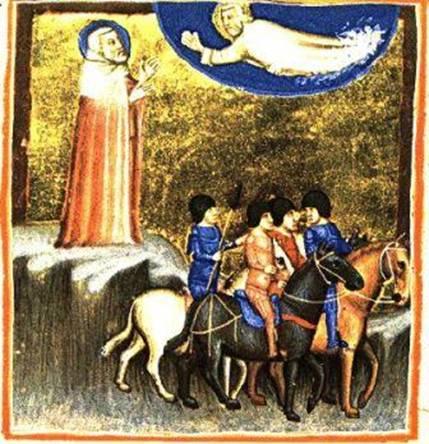Minor Prophets -- Overview
MINOR PROPHETS: OVERVIEW
Possible Lesson Plan:
- Open with prayer.
- Scripture Reference: Okay, how would you like to go down in Biblical history as a “minor” prophet? Not only that, but no one has any idea who you were as a person or what you said and did! Like 12-tuplets… Not any more. Let’s meet each one -- maybe not in the depth we met Jonah, but at least a passing acquaintance. Have each student scan one or two books for a few minutes; they’re all short. Then summarize each in one or two sentences, trying to catch the essence of what the prophet said. Remember that Samaria was the capital of Israel, the northern kingdom, and Jerusalem of Judah in the south.
3. History: The setting and time are important here; give this information just before the student summarizes the message.
- Hosea: A prophet of the northern kingdom, after Elijah, Elisha, and Amos, speaking of Israel’s unfaithfulness to God in worshipping Baal
- Joel: An early prophet of Judah, just after the time of Elisha in the north, during the reign of Joash, before Isaiah.
- Amos: A prophet of Judah but speaking to Israel, knowing both Joel and Hosea, a shepherd with little education
- Obadiah: Obadiah lived in the time of the fall of Judah under Zedekiah but spoke to the Edomites, descendants of Esau and living in the mountains, always bitter enemies of the Jews. True to his prophecy, in 582 BC Edom was destroyed by the Babylonians
- Micah: Micah lived near Jerusalem, a contemporary of Isaiah
- Nahum: Capernaum was named for Nahum (“village of Nahum”). He is the second prophet to the Assyrians (Who was first?) and spoke after the fall of Israel to Assyria, but before the fall of Assyria to Babylon
- Habakkuk: Prophet of Judah, just after the wonderful reforms of Josiah, under the wicked king Jehoiakim, contemporary of Jeremiah. The matins of Holy Saturday say, “Foreseeing Thy divine self-emptying upon the Cross, Habakkuk cried out marveling: ‘Thou has cut short the strength of the powerful, O gracious and almighty Lord, and preached to those in hell.’” “The inspired prophet Habakkuk now stands with us in holy vigil. He is like a shining angel who cries with a piercing voice, Today salvation has come to the world…” states the Paschal canon. Habakkuk was also translated by the holy archangel to bring food to the Prophet Daniel in the lion’s den – a trip from Judah to Babylon in the wink of an eye.
- Zephaniah: Prophet of Judah during the reign of Josiah; he was a prime mover in the reformations of Josiah,& a prince,great-great-grandson of Hezekiah. He’s read on Palm Sunday because of his prophecy about the colt (3:14).
- Haggai and Zechariah: These men worked side by side preaching and teaching while the temple was being rebuilt just before Ezra arrived in Jerusalem. Haggai was an old man, while Zechariah was a young man. Zechariah 11 is read on Good Friday (30 pieces of silver) and 14 on Ascension.
- Malachi: Lived in the time of Nehemiah, when the Jews were back home from captivity, but apathetic and lax. Jesus is “the sun of Righteousness”
Confused? Try making a "Prophet Catcher":
Prophet Catcher
- With the printed side up, fold the square in half horizontally and then vertically, open the folds.
- Turn the square over.
- Fold each corner over so they meet in the middle, do not let them overlap.
- Leave the square folded, and flip the square over.
- Now fold the corners into the center – make sure they do not overlap.
- Fold the entire square in half and poke your thumbs and forefingers in under the flaps.
- Bring your fingers together so the Fortune Teller forms a peak –
- YOU are ready to PLAY!
Amos, the shepherd, Habakkuk with his pot of stew for the Prophet Daniel, Micah and his prophecy of the city of Bethlehem, and Haggai with the rebuilding of the temple in Jerusalem are on the 4 outside flaps. Can the students correctly identify the prophets associated with the quotes beside the numbers?
4. Discussion: Today we will focus on learning the immense amount of material above. Try “Final Jeopardy”: you give a clue, the students each write an answer on a small pad of paper and hold it up, each correct answer gets a point. You’ll have time for lots of questions and be able to see how much was absorbed.
5. Close with prayer: Have each student select a prophet who has “spoken” to him today and pray to be more like that prophet, heed his message, etc.
 Icon of the prophet Habakkuk
Icon of the prophet Habakkuk